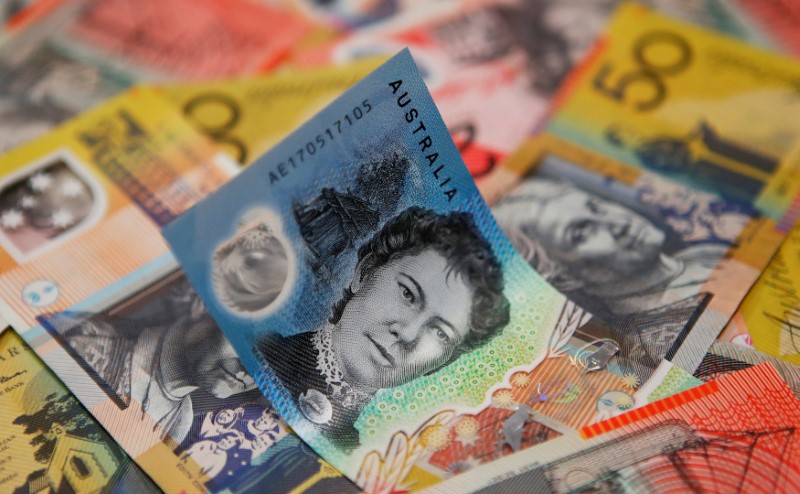By Swati Pandey
SYDNEY (Reuters) - Foreign exchange traders recalibrated their expectations downwards for the Australian and New Zealand dollars after steep losses recently, but the two are still seen trapped in a narrow trading band over one year, a Reuters poll showed.
The survey of 38-45 analysts plotted an uneventful future for the Australian dollar, which is seen at $0.7600 in one-month, $0.7663 in three months, $0.7700 in six months and $0.7800 over a one-year horizon.
That is lower than previous expectations the currency would touch $0.7800 in three months and $0.7900 in 12 months.
The Aussie fell for a third straight month in April and was last at $0.7532. It is now on track for a fourth straight weekly loss as the U.S. dollar has pulled up on stronger-than-forecast economic indicators in recent weeks.
The continuing trade war rhetoric between China and the United States after U.S. President Donald Trump announced import duties on Chinese goods is also weighing on the antipodean currencies.
Trump's move was met with tit-for-tat measures by China, spooking investors who fear the deepening row could derail global growth momentum.
A trade war is particularly bad for open, export-dependent economies of Australia and New Zealand which are heavily reliant on China to buy their wares.
The uncertainty might explain the wide range in the forecasts from as low as $0.6600 and as high as $0.8600 for the Aussie on a one-year horizon.
Easy monetary policies in Australia and New Zealand at a tine when the U.S. Federal Reserve is on a tightening path further adds to the bearish case for the antipodeans.
"While the level of (global) growth remains positive, it is moderating and we think this will persist," said Daniel Been, head of forex research at ANZ, which sees the Aussie at $0.7000 in 12 months.
"With the domestic stories in both Australia and New Zealand well understood and well priced, the global picture is likely to be a key determinant of performance," he said.
"The combination of lower growth and tighter liquidity is likely to weigh - the question is how much."
The Reserve Bank of Australia (RBA) has left rates at a record low 1.50 percent since August 2016 and has given a clear signal that policy will remain easy for a while yet.
The story is not a lot different in New Zealand where the country's central bank held rates at an all-time low 1.75 percent this week.
Analysts polled by Reuters predicted small future moves for the kiwi, which currently sits at $0.6973.
The median forecast put the currency at $0.7076 in one month, $0.7017 in three months, $0.7100 in six months, ticking up to $0.7250 in one year.
Again, that is lower than the April poll when analysts had seen the kiwi at $0.7200 in three months and $0.7400 over a 12-month horizon.
While the median forecasts were narrowly spread, there was far more variety at the extremes, with the highest prediction for 12-months out at $0.8000 and the lowest at $0.6000.
